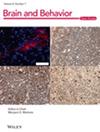Humans obtain most of their information from visual stimuli. The perception of these stimuli may be modulated by the ongoing pre-stimulus brain activities. Depending on the task design, the processing of different cognitive functions such as spatial attention, feature-based attention, temporal attention, arousal, and mental imagery may start prior to the stimulus onset.
This process is typically accompanied by changes in pre-stimulus oscillatory activities including power, phase, or connectivity in different frequency bands. To explain the effect of these changes, several mechanisms have been proposed. In this article, we review these changes and the potential mechanisms in the context of the pre-stimulus enabled cognitive functions. We provide evidence both in favor of and against the most documented mechanisms and conclude that no single mechanism can solely delineate the effects of pre-stimulus brain activities on later processing. Instead, multiple mechanisms may work in tandem to guide pre-stimulus brain activities.
Additionally, our findings indicate that in many studies a combination of these cognitive functions begins prior to stimulus onset.
Thus, dissociating these cognitive functions is challenging based on the current literature, and the need for precise task designs in later studies to differentiate between them is crucial.



